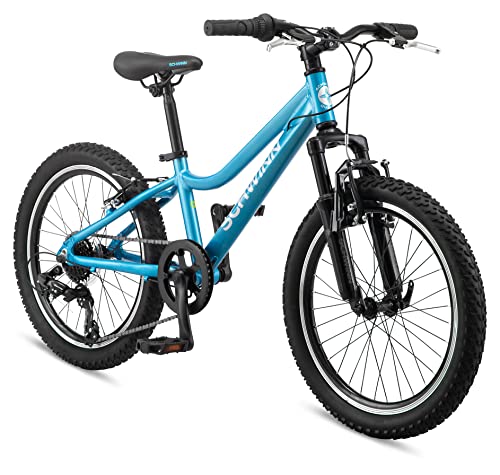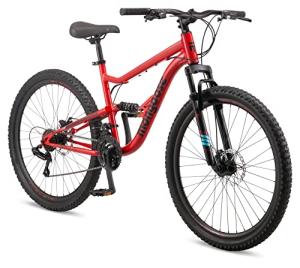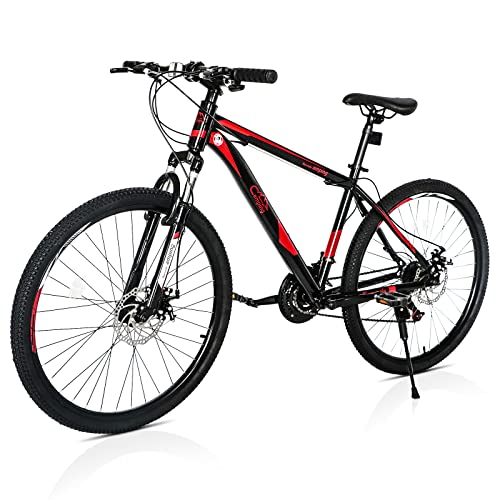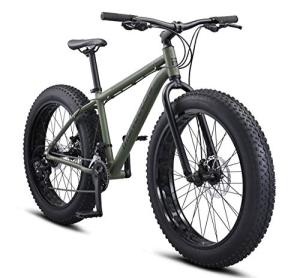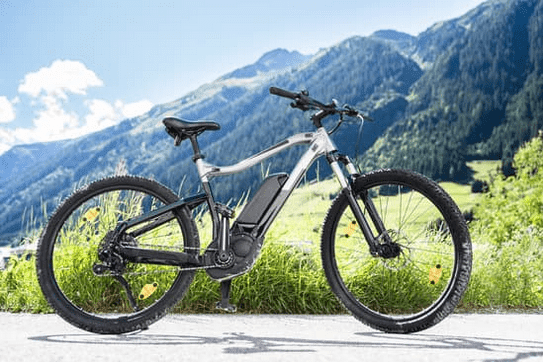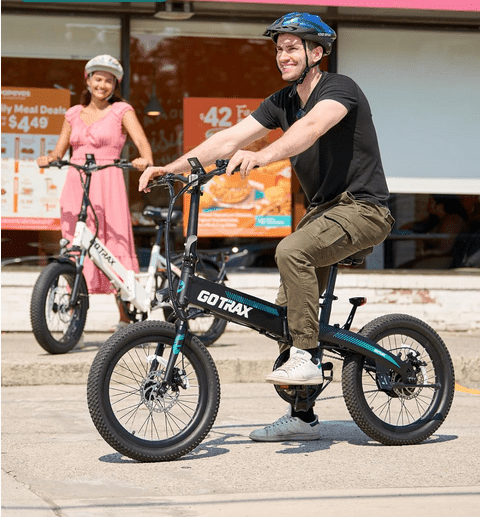Battery Basics: How Long Can Your Electric Mountain Bike Go?
Knowing how long your electric mountain bike's battery life lasts is key for a great ride. SHIMANO says it's important to understand the battery system and follow maintenance tips for the best performance.

Getting the most out of your e-bike is not just about knowing the basics. It's also about using e-bike range tips that really help. You can ride longer and perform better by learning to maximize e-bike battery power.
Exploring electric mountain biking means knowing your bike's battery inside out. This introduction provides more details on keeping your eMTB's battery in top shape.
Understanding E-Bike Battery Fundamentals
Knowing about e-bike batteries is key for electric mountain bike fans. There are many types and capacities, each with its own advantages and disadvantages.
Battery Types and Capacities
The lithium-ion battery is the most common. It's known for being both powerful and long-lasting.
Lithium-Ion vs. Other Battery Technologies
Lithium-ion batteries beat out lead-acid and nickel-cadmium. They have more energy and last longer.
What Watt-Hours (Wh) Mean
Watt-hours (Wh) show a battery's total capacity. A higher Wh means you can ride longer.
Decoding Battery Specifications
Understanding battery specs is important. It helps you compare different batteries.
Voltage, Amperage, and Capacity Explained
Voltage controls the bike's power. Amperage is about how much current it uses. Capacity, in Ah, shows how much energy it can hold.
| Specification | Description | Impact on E-Bike |
|---|---|---|
| Voltage | Power output | Affects speed and acceleration |
| Amperage | Current drawn | Influences range and performance |
| Capacity (Ah) | Energy storage | Determines the overall range |
The Truth About Manufacturer Range Claims
What manufacturers say about the range isn't always true. Real range depends on terrain, rider weight, and how much assist you use.
Factors That Affect Your Electric Mountain Bike's Range
The distance your electric mountain bike can cover depends on several critical factors. Knowing these can help you get the most out of your ride and plan your adventures better.
Rider Weight and Riding Style
Your weight and how you ride affect your e-bike's range. A heavier rider or someone who rides aggressively can cut down the distance. This is because they use more power.
Impact of Aggressive vs. Conservative Riding
Riding aggressively means quick starts and high speeds, which use up the battery faster than a steady pace. Riding smoothly can make your battery last longer.
Terrain and Elevation Changes
The terrain you ride on is also key to your e-bike's range. Riding in hilly or mountainous areas uses more power. This means you can travel a shorter distance.
How Hills Drain Your Battery Faster
Going uphill takes more energy from the battery. The motor works harder, which cuts down your range.

Weather Conditions and Temperature
Weather, like temperature, can change how your e-bike's battery works. Extreme temperatures can make the battery less efficient. This affects how far you can go.
Cold Weather Battery Performance Issues
Cold weather makes batteries work less well, which means you can't go as far. Lithium-ion batteries, which are common in e-bikes, don't like cold.
Assist Level Selection
The level of assistance you choose affects your range. Higher levels give more power but use more battery.
Battery Consumption at Different Power Modes
Higher power modes use up the battery quicker than lower ones. Choosing the right assist level for the terrain and your needs can improve your range.
Battery Basics: How Long Can Your Electric Mountain Bike Go?
Knowing how far your electric mountain bike can go is key for planning rides. Whether you're exploring trails or commuting, knowing the range is crucial.
Realistic Range Expectations by Battery Size
The battery size greatly affects your e-bike's range. A bigger battery means you can go further. For example, a 500Wh battery can last 20-40 miles, depending on the terrain and assistance level.
500Wh vs. 750Wh vs. 1000Wh Batteries
Different battery sizes offer different ranges. A 750Wh battery can double the range of a 500Wh battery. A 1000Wh battery gives even more range, perfect for long rides or tough terrain.

Trail Riding vs. Commuting Range Differences
Trail riding uses more battery due to varied terrain and steep inclines. Commuting on flat terrain with less power can extend your range.
How to Calculate Your Potential Range
Use simple formulas to guess your e-bike's range. These formulas consider battery capacity, system efficiency, and riding conditions.
Simple Formulas for Range Estimation
A basic formula is: Range = Battery Capacity (Wh) / Average Power Consumption (W). For instance, with a 500Wh battery and 250W consumption, you get about 2 hours of riding. This translates to 20-25 miles, depending on your speed.
By understanding these factors and choosing the right battery size, you can plan better rides. Enjoy your electric mountain bike to its fullest.
Proven Techniques to Extend Your Ride Distance
Boosting your e-bike's range is easy with smart riding and bike care. These tips help you ride longer without worrying about running out of power.
Strategic Use of Assist Levels
Using assist levels wisely is key to longer rides. Most e-bikes have different modes, from eco to turbo.
When to Use Eco vs. Turbo Mode
Eco mode saves battery and extends your range. It's best for everyday riding. Turbo mode is for steep hills or when you need a quick boost.
Eco mode can extend your range by up to 50% compared to turbo mode.
Pedaling Efficiency Tips
It's crucial to be efficient with your pedaling. Finding the right cadence and gear for the terrain is key.
Cadence and Gear Selection Strategies
Keep your cadence between 60-80 RPM to save battery. Choose the right gear for the terrain to make a big difference.
A higher cadence with lower gearing can be more efficient than a lower cadence with higher gearing.
Carrying a Spare Battery or Range Extender
Carrying a spare battery or range extender is a big help for long rides.
Quick-Swap Battery Techniques
A quick-swap battery system makes switching batteries easy. This cuts down on downtime.
"A spare battery can literally double your riding distance, giving you the freedom to explore further."
Weight Reduction Strategies
Lighter e-bikes and riders go further. Carry only what you need, use light accessories, and ride in a way that cuts wind resistance.
- Remove unnecessary accessories to reduce weight.
- Use lightweight clothing and gear.
- Optimize your riding position to reduce wind resistance.
Battery Care and Maintenance for Longevity
Keeping your e-bike's battery in good shape can make it last longer and work better. You need to charge it right, store it properly, and manage its temperature.
Proper Charging Practices
Don't let your battery run all the way down. Keep it away from very hot or cold spots while charging. Also, make sure your charger's firmware is up to date.
Optimal Charging Frequency and Timing
Charge your battery just before you're going to use it. Try not to let it get too low too often. Most batteries do best when they're between 20% and 80% charged.
Storage Recommendations
Keep your battery in a cool, dry spot, away from sunlight. If you won't use your e-bike for a while, charge it to about 50%. Check on it every few months.
Long-Term Storage Battery Maintenance
For long storage, check the battery's charge level often and recharge it as needed to keep it healthy.
Temperature Management
Extreme temperatures can harm your battery's performance and lifespan. When possible, try to keep it between 50°F and 80°F (10°C and 27°C).
Protecting Your Battery in Extreme Conditions
Use insulation or thermal covers to shield your battery from cold or hot weather.
When to Replace Your Battery
It's important to know when to replace your battery. Look for signs like reduced range, slower charging, or physical damage.
Signs of Battery Degradation
If your battery is old or showing wear, it might be time for a new one. Check your manufacturer's guidelines for the best replacement options.
| Maintenance Task | Frequency | Benefit |
|---|---|---|
| Check Charge Level | Every 2 months | Prevents Deep Discharge |
| Clean Battery Contacts | Every 6 months | Ensures Good Connectivity |
| Update Charger Firmware | As Available | Optimizes Charging Efficiency |
Troubleshooting Common Battery Issues
Fixing your e-bike's battery problems is easy if you know what to do. Issues like unexpected range drops, connection problems, and charging issues are common.
Diagnosing Unexpected Range Drops
Range drops can happen for many reasons, including your weight, the terrain, and how much assist you use. Check your battery's charge and consider any changes in your riding or surroundings.
Fixing Connection Problems
Dirty or loose connections often cause problems. Look at your battery connections, clean them if needed, and make sure they're tight.
Dealing with Charging Difficulties
Charging problems might be due to a bad charger, a damaged battery, or wrong charging methods. Make sure your charger works right and follow the charging instructions from the maker.
When to Seek Professional Help
If you've tried fixing things and still have issues, it's time to get help from a pro. Signs you need an expert include ongoing connection issues, a big drop in battery range, or a battery that won't charge.
Maximizing Your Electric Mountain Bike Experience
Understanding e-bike batteries and adjusting your riding habits can greatly improve your experience. Keeping your battery in good shape is key to its long life and performance.
It is important to be aware of what affects your e-bike's range. This includes the terrain, weather, and the assist level you choose. You can ride longer and farther by using assist levels wisely and taking care of your battery.
Improving your e-bike experience goes beyond just the tech. It's also about knowing how to care for your battery. With the tips from this article, you can enjoy more efficient rides. You'll be able to explore new trails and challenge yourself with confidence.
Knowing how long your electric mountain bike's battery life lasts is key for a great ride. SHIMANO says it's important to understand the battery system and follow maintenance tips for the best performance.

Getting the most out of your e-bike is not just about knowing the basics. It's also about using e-bike range tips that really help. You can ride longer and perform better by learning to maximize e-bike battery power.
Exploring electric mountain biking means knowing your bike's battery inside out. This introduction provides more details on keeping your eMTB's battery in top shape.
Understanding E-Bike Battery Fundamentals
Knowing about e-bike batteries is key for electric mountain bike fans. There are many types and capacities, each with its own advantages and disadvantages.
Battery Types and Capacities
The lithium-ion battery is the most common. It's known for being both powerful and long-lasting.
Lithium-Ion vs. Other Battery Technologies
Lithium-ion batteries beat out lead-acid and nickel-cadmium. They have more energy and last longer.
What Watt-Hours (Wh) Mean
Watt-hours (Wh) show a battery's total capacity. A higher Wh means you can ride longer.
Decoding Battery Specifications
Understanding battery specs is important. It helps you compare different batteries.
Voltage, Amperage, and Capacity Explained
Voltage controls the bike's power. Amperage refers to the amount of current it uses. Capacity, in Ah, indicates the amount of energy it can store.
| Specification | Description | Impact on E-Bike |
|---|---|---|
| Voltage | Power output | Affects speed and acceleration |
| Amperage | Current drawn | Influences range and performance |
| Capacity (Ah) | Energy storage | Determines the overall range |
The Truth About Manufacturer Range Claims
What manufacturers say about the range isn't always true. Real range depends on terrain, rider weight, and how much assist you use.
Factors That Affect Your Electric Mountain Bike's Range
The distance your electric mountain bike can cover depends on several critical factors. Knowing these can help you get the most out of your ride and plan your adventures better.
Rider Weight and Riding Style
Your weight and riding style affect your e-bike's range. A heavier rider or someone who rides aggressively can cut down the distance. This is because they use more power.
Impact of Aggressive vs. Conservative Riding
Riding aggressively means quick starts and high speeds, which use up the battery faster than a steady pace. Riding smoothly can make your battery last longer.
Terrain and Elevation Changes
The terrain you ride on is also key to your e-bike's range. Riding in hilly or mountainous areas uses more power. This means you can travel a shorter distance.
How Hills Drain Your Battery Faster
Going uphill takes more energy from the battery. The motor works harder, which cuts down your range.

Weather Conditions and Temperature
Weather, like temperature, can change how your e-bike's battery works. Extreme temperatures can make the battery less efficient. This affects how far you can go.
Cold Weather Battery Performance Issues
Cold weather reduces the effectiveness of batteries, which means you can't travel as far. Lithium-ion batteries, which are common in e-bikes, don't perform well in cold temperatures.
Assist Level Selection
The level of assistance you choose affects your range of options. Higher levels give more power but use more battery.
Battery Consumption at Different Power Modes
Higher power modes use up the battery quickly than lower ones. Choosing the right assist level for the terrain and your needs can improve your range.
Battery Basics: How Long Can Your Electric Mountain Bike Go?
Knowing how far your electric mountain bike can go is key for planning rides. Whether you're exploring trails or commuting, knowing the range is crucial.
Realistic Range Expectations by Battery Size
The battery size greatly affects your e-bike's range. A bigger battery means you can go further. For example, a 500Wh battery can last 20-40 miles, depending on the terrain and assistance level.
500Wh vs. 750Wh vs. 1000Wh Batteries
Different battery sizes offer different ranges. A 750Wh battery can double the range of a 500Wh battery. A 1000Wh battery provides even greater range, making it perfect for long rides or navigating tough terrain.

Trail Riding vs. Commuting Range Differences
Trail riding uses more battery due to varied terrain and steep inclines. Commuting on flat terrain with less power can extend your range.
How to Calculate Your Potential Range
Use simple formulas to guess your e-bike's range. These formulas consider battery capacity, system efficiency, and riding conditions.
Simple Formulas for Range Estimation
A basic formula is: Range = Battery Capacity (Wh) / Average Power Consumption (W). For instance, with a 500Wh battery and 250W consumption, you get about 2 hours of riding. This translates to 20-25 miles, depending on your speed.
By understanding these factors and choosing the right battery size, you can plan better rides. Enjoy your electric mountain bike to its fullest.
Proven Techniques to Extend Your Ride Distance
Boosting your e-bike's range is easy with smart riding and bike care. These tips help you ride longer without worrying about running out of power.
Strategic Use of Assist Levels
Using assist levels wisely is key to longer rides. Most e-bikes have different modes, from eco to turbo.
When to Use Eco vs. Turbo Mode
Eco mode saves battery and extends your range. It's best for everyday riding. Turbo mode is for steep hills or when you need a quick boost.
Eco mode can extend your range by up to 50% compared to turbo mode.
Pedaling Efficiency Tips
It's crucial to be efficient with your pedaling. Finding the right cadence and gear for the terrain is key.
Cadence and Gear Selection Strategies
Keep your cadence between 60-80 RPM to save battery. Choose the right gear for the terrain to make a big difference.
A higher cadence with lower gearing can be more efficient than a lower cadence with higher gearing.
Carrying a Spare Battery or Range Extender
Carrying a spare battery or range extender is a big help for long rides.
Quick-Swap Battery Techniques
A quick-swap battery system makes switching batteries easy. This cuts down on downtime.
"A spare battery can literally double your riding distance, giving you the freedom to explore further."
Weight Reduction Strategies
Lighter e-bikes and riders go further. Carry only what you need, use light accessories, and ride in a way that cuts wind resistance.
- Remove unnecessary accessories to reduce weight.
- Use lightweight clothing and gear.
- Optimize your riding position to reduce wind resistance.
Battery Care and Maintenance for Longevity
Keeping your e-bike's battery in good condition can extend its lifespan and improve its performance. To achieve this, you need to charge it correctly, store it properly, and manage its temperature effectively.
Proper Charging Practices
Don't let your battery run completely out of charge. Keep it away from very hot or cold spots while charging. Also, make sure your charger's firmware is up to date.
Optimal Charging Frequency and Timing
Charge your battery just before you're going to use it. Try not to let it get too low too often. Most batteries do best when they're between 20% and 80% charged.
Storage Recommendations
Keep your battery in a cool, dry spot, away from sunlight. If you won't use your e-bike for a while, charge it to about 50% of its capacity. Check on it every few months.
Long-Term Storage Battery Maintenance
For long-term storage, check the battery's charge level frequently and recharge it as needed to maintain its health.
Temperature Management
Extreme temperatures can harm your battery's performance and lifespan. When possible, try to keep it between 50°F and 80°F (10°C and 27°C).
Protecting Your Battery in Extreme Conditions
Use insulation or thermal covers to shield your battery from cold or hot weather.
When to Replace Your Battery
It's important to know when to replace your battery. Look for signs like reduced range, slower charging, or physical damage.
Signs of Battery Degradation
If your battery is old or showing signs of wear, it may be time for a replacement. Check your manufacturer's guidelines for the best replacement options.
| Maintenance Task | Frequency | Benefit |
|---|---|---|
| Check Charge Level | Every 2 months | Prevents Deep Discharge |
| Clean Battery Contacts | Every 6 months | Ensures Good Connectivity |
| Update Charger Firmware | As Available | Optimizes Charging Efficiency |
Troubleshooting Common Battery Issues
Fixing your e-bike's battery problems is easy if you know what to do. Issues like unexpected range drops, connection problems, and charging issues are common.
Diagnosing Unexpected Range Drops
Range drops can happen for many reasons, including your weight, the terrain, and how much assist you use. Check your battery's charge and consider any changes in your riding or surroundings.
Fixing Connection Problems
Dirty or loose connections often cause problems. Inspect your battery connections, clean them if necessary, and ensure they are secure and tight.
Dealing with Charging Difficulties
Charging problems may be due to a faulty charger, a damaged battery, or incorrect charging methods. Ensure your charger functions properly and follow the charging instructions provided by the manufacturer.
When to Seek Professional Help
If you've tried fixing things and still have issues, it's time to get help from a pro. Signs you need an expert include ongoing connection issues, a big drop in battery range, or a battery that won't charge.
Maximizing Your Electric Mountain Bike Experience
Understanding e-bike batteries and adjusting your riding habits can greatly improve your experience. Keeping your battery in good shape is key to its long life and performance.
It is essential to be aware of the factors that affect your e-bike's range. This includes the terrain, weather, and the assist level you choose. You can ride longer and farther by using assist levels wisely and taking care of your battery.
Improving your e-bike experience goes beyond just the tech. It's also about knowing how to care for your battery. With the tips from this article, you can enjoy more efficient rides. You'll be able to explore new trails and challenge yourself with confidence.
Disclaimer
This document is provided for general information purposes only and should not be relied upon as providing legal advice, technical, or specific operational guidance to the reader, whether as to the practices described in the document or the applicable legal requirements and regulations. just electric bikes.com expressly disclaims any responsibility for liability arising from or related to the use or misuse of any information in this document.

